 W
WThe 13 May 1969 incident was the Sino-Malay sectarian violence that took place in Kuala Lumpur, Malaysia on that date in 1969. The riot occurred in the aftermath of the 1969 Malaysian general election when opposition parties made gains at the expense of the ruling coalition, the Alliance Party. Official reports put the number of deaths due to the riots at 196, although Western diplomatic sources at the time suggested a toll of close to 600, with most of the victims Chinese. The racial riots led to a declaration of a state of national emergency or Darurat by the Yang di-Pertuan Agong resulting in the suspension of the Parliament by the Malaysian government, while the National Operations Council (NOC), also known as the Majlis Gerakan Negara (MAGERAN), was established as a caretaker government to temporarily govern the country between 1969 and 1971.
 W
WThe 1740 Batavia massacre was a pogrom in which Dutch East Indies soldiers and native collaborators killed ethnic Chinese residents of the port city of Batavia in the Dutch East Indies. The violence in the city lasted from 9 October 1740 until 22 October, with minor skirmishes outside the walls continuing late into November that year. Historians have estimated that at least 10,000 ethnic Chinese were massacred; just 600 to 3,000 are believed to have survived.
 W
WThe 1920 Nebi Musa riots or 1920 Jerusalem riots took place in British-controlled part of Occupied Enemy Territory Administration between Sunday, 4 and Wednesday, 7 April 1920 in and around the Old City of Jerusalem. Five Jews and four Arabs were killed, and several hundred were injured. The riots coincided with and are named after the Nebi Musa festival, which took place every year on Easter Sunday, and followed rising tensions in Arab-Jewish relations. The events came shortly after the Battle of Tel Hai and the increasing pressure on Arab nationalists in Syria in the course of the Franco-Syrian War.
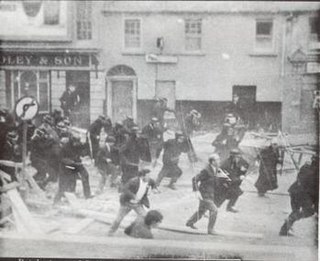 W
WDuring 12–16 August 1969, there was an outbreak of political and sectarian violence in Northern Ireland, which is often seen as the beginning of the thirty-year conflict known as the Troubles. There had been sporadic violence throughout the year arising out of the civil rights campaign, which demanded an end to discrimination against Catholics and Irish nationalists. Civil rights marches had been repeatedly attacked by Ulster Protestant loyalists and also came into frequent conflict with the Royal Ulster Constabulary (RUC), the overwhelmingly Protestant police force.
 W
WThe 1987 Eastern Province massacres were a series of massacres of the Sinhalese population in the Eastern Province of Sri Lanka during the Sri Lankan Civil War. Though they began spontaneously, they became more organized, with the LTTE leading the violence.
 W
WThe 2001 Kampung Medan riots is a sectarian violence between the Indian and Malay that initially began in a small village of Kampung Medan located in Petaling Jaya, Selangor, Malaysia. The riot then further escalated and spread all the way through Kampung Gandhi, Kampung Lindungan, Kampung Datuk Harun, Taman Desa Ria and the surrounding of Jalan Klang Lama. The racial crisis then spread all the way through Petaling Jaya, Jalan Gasing, Kelana Jaya, Sungai Way, Bandar Sunway and Puchong. The riot started from 4 March until 13 March 2001. Photographs in Malaysiakini's possession are gruesome evidence of the extensive hurt, both physical and emotional, inflicted by the clashes. The three weeks of tension resulted in the deaths of 6 people, and left over a hundred people with severe wounds, ranging from head injuries, broken bones, to slashes and hacked off limbs. Four hundred people were detained.
 W
WThe July 2009 Ürümqi riots were a series of violent riots over several days that broke out on 5 July 2009 in Ürümqi, the capital city of the Xinjiang Uyghur Autonomous Region (XUAR), in Northwestern China. The first day's rioting, which involved at least 1,000 Uyghurs, began as a protest but escalated into violent attacks that mainly targeted Han people. China's People's Armed Police were deployed and two days later hundreds of Han people clashed with both police and Uyghurs. PRC officials said that a total of 197 people died, most of whom were Hans, with 1,721 others injured and many vehicles and buildings destroyed. Many Uyghurs disappeared during wide-scale police sweeps in the days following the riots; Human Rights Watch (HRW) documented 43 cases and said figures for real disappearances were likely to be much higher.
 W
WThe 1947 Aden riots were three days of violence in which the Jewish community of Aden was attacked by members of the Yemeni-Arab community in early December, following the approval of the United Nations Partition Plan for Palestine on 29 November 1947. It was one of the most violent pogroms in modern times against Mizrahi-Jewish communities in the Middle East, resulting in the deaths of 76–82 Jews, 33 Arabs, 4 Muslim Indians, and one Somali, as well as wide-scale devastation of the local Jewish community of Aden.
 W
WThe 1947 anti-Jewish riots in Aleppo were an attack on Syrian Jews in Aleppo, Syria in December 1947, following the United Nations vote in favour of partitioning Palestine. The attack, a part of an anti-Jewish wave of unrest across the Middle East and North Africa, resulted in some 75 Jews murdered and several hundred wounded. In the aftermath of the riots, half the city's Jewish population fled the city.
 W
WThe 2014 anti-Muslim riots in Sri Lanka were religious and ethnic riots in June 2014 in south-western Sri Lanka. Muslims and their property were attacked by Sinhalese Buddhists in the towns of Aluthgama, Beruwala and Dharga Town in Kalutara District. At least four people were killed and 80 injured. Hundreds were made homeless following attacks on homes, shops, factories, mosques and a nursery. 10,000 people were displaced by the riots. The riots followed rallies by Bodu Bala Sena (BBS), a hard line Buddhist group. The BBS was widely blamed for inciting the riots but it has denied responsibility. The mainstream media in Sri Lanka censored news about the riots following orders from the Sri Lankan government.
 W
WThe Sri Lankan anti-Muslim riots were a series of religious riots targeting Muslims that began in the Sri Lankan town of Ampara on 26 February 2018, spreading to Kandy District by 2 March until its end on 10 March 2018. Muslim citizens, mosques and other properties were attacked by mobs of Sinhalese Buddhists, and mobs of Muslims attacked Buddhists Temples and Sinhalese citizens. The Government of Sri Lanka undertook a forceful crackdown on the rioting by imposing a state of emergency and deploying the Sri Lankan Armed Forces to assist the Police in the affected areas. The situation was brought under control by 9 March. Two fatalities and ten injuries were reported among Sinhalese, Muslims and Police. According to the police, forty five incidents of damage to houses and businesses have been reported, while four places of worship have been attacked. The police arrested 81 persons in connection with rioting.
 W
WBlack July is the common name used to refer to the anti-Tamil pogrom and riots in Sri Lanka during July 1983. The riots began as a response to a deadly ambush on 23 July 1983, which caused the death of 13 Sri Lanka Army soldiers, by the Tamil militant group Liberation Tigers of Tamil Eelam (LTTE).
 W
WThe 1958 anti-Tamil pogrom and riots in Ceylon, also known as the 58 riots, refer to the first island wide ethnic riots and pogrom to target the minority Tamils in the Dominion of Ceylon after it became an independent dominion from Britain in 1948. The riots lasted from 22 May until 29 May 1958 although sporadic disturbances happened even after the declaration of emergency on 27 May 1958. The estimates of the murders range, based on recovered body count, from 158 to 1,500. Although most of the victims were Tamils, majority Sinhalese civilians and their property was also affected both by attacks by Tamil mobs throughout the Batticaloa and Jaffna districts as well as Sinhalese mobs who attacked those Sinhalese who provided sanctuary to Tamils. As the first full-scale race riot in the country in over forty years, the events of 1958 shattered the trust the communities had in one another and led to further polarisation.
 W
WThe 1956 anti-Tamil pogrom, also known as the Gal Oya riots, was the first organised pogrom against Sri Lankan Tamils in the Dominion of Ceylon. The worst of the violence took place in the Gal Oya valley, where local majority Sinhalese colonists and employees of the Gal Oya Development Board commandeered government vehicles, dynamite and weapons and massacred minority Tamils. It is estimated that over 150 people lost their lives during the violence. Although initially inactive, the police and army were eventually able to bring the situation under control.
 W
WThe 1981 Anti-Tamil pogrom occurred in Sri Lanka during the months of June, July and August 1981. Organised Sinhala mobs looted and burnt Tamil shops and houses in Jaffna, Ratnapura, Balangoda, Kahawatte, Colombo and in the border villages in the Batticaloa and Amparai districts. Further looting, arson and killings then spread to the rural interior:"In the hill country, crowds armed with clubs, iron rods, bicycle chains, swords and knives roamed the estates burning, pillaging, looting and killing. Police and army units stood watching, often encouraging the rioters. In the eastern border villages, entire villages were burnt down. People ran into the forests to save their lives. They then took refuge in government schools and Hindu temples. Over 25,000 Tamil plantation workers were rendered homeless in the hills and over 10,000 villagers were made refugees in the east.”
 W
WThe Crown Heights riot was a race riot that took place from August 19 to 21, 1991, in the Crown Heights section of Brooklyn, New York City. Black residents turned against Orthodox Jewish Chabad residents, resulting in a deterioration of already tense racial relations in the densely populated community. The riots began on August 19, 1991, after two children of Guyanese immigrants were accidentally struck by a car running a red light while following the motorcade of Rebbe Menachem Mendel Schneerson, the leader of Chabad, a Jewish religious movement. One child died and the second was severely injured.
 W
WThe 1990 Dushanbe riots were an anti-government unrest in Dushanbe, the capital of Tajikistan, from February 12–14, 1990.
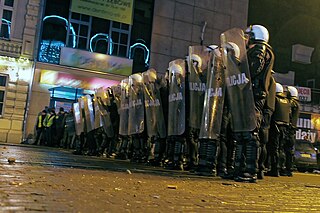 W
WThe anti-Muslim Ełk riots occurred on 1 January 2017 in the town of Ełk, Poland, after a 21 year old Daniel Rudnicki stole two Coke bottles from a local kebab eatery and was murdered by the establishment's cook who chased him with a knife. The fatal stabbing sparked riots the next day. Angry young locals chanted anti-foreigner slogans, smashed Prince Kebab's window, and threw rocks, bottles, and at least one firecracker at the restaurant. Police responded using pepper spray and arrested 28 people.
 W
WThe First Intifada, or First Palestinian Intifada, was a sustained series of Palestinian protests, and in some cases violent riots, against the Israeli occupation of the West Bank and Gaza that had begun twenty years prior, in 1967. The intifada lasted from December 1987 until the Madrid Conference in 1991, though some date its conclusion to 1993, with the signing of the Oslo Accords.
 W
WThe May 1998 riots of Indonesia, also known as the 1998 tragedy or simply the 1998 event, were incidents of mass violence, demonstrations, and civil unrest of a racial nature that occurred throughout Indonesia, mainly in Medan in the province of North Sumatra, the capital city Jakarta, and Surakarta in the province of Central Java. The riots were triggered by economic problems, including food shortages and mass unemployment. It eventually led to the resignation of President Suharto and the fall of the New Order government. The main targets of the violence were ethnic Chinese Indonesians, but most of the casualties were caused by a massive fire and occurred among looters.
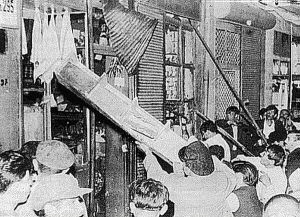 W
WThe Istanbul pogrom, also known as the Istanbul riots or September events, comprises organized mob attacks directed primarily at Istanbul's Greek minority on 6–7 September 1955. The pogrom were orchestrated by the governing Democratic Party in Turkey in cooperation with various security organizations .The events were triggered by the false news that the day before, Greeks had bombed the Turkish consulate in Thessaloniki, in northern Greece—the house where Mustafa Kemal Atatürk had been born in 1881. A bomb planted by a Turkish usher at the consulate, who was later arrested and confessed, incited the events. The Turkish press, conveying the news in Turkey, was silent about the arrest and instead insinuated that Greeks had set off the bomb.
 W
WThe Jaffa riots was a series of violent riots in Mandatory Palestine on May 1–7, 1921, which began as a fight between two Jewish groups but developed into an attack by Arabs on Jews during which many were killed. The rioting began in Jaffa and spread to other parts of the country. The riot resulted in the deaths of 47 Jews and 48 Arabs. Another 146 Jews and 73 Arabs were wounded.
 W
WThe 1947 Jerusalem Riots occurred following the vote in the UN General Assembly in favour of the 1947 UN Partition Plan on 29 November 1947.
 W
WKalugumalai riots of 1895 was an inter caste conflict between Nadars and Maravars during 1895 in Kalugumalai in Madras Presidency in British India. A total of ten people were killed and numerous people were injured. The temple chariot of Kalugasalamoorthy Temple was also burnt during the riots. The contention of the communities were over the usage of the Car streets round the temple by Nadars, which were opposed by the other communities quoting private ownership and religious sanctity.
 W
WIn 2000, there was unrest in Kosovo, which was under United Nations Interim Administration after the adoption of the Resolution 1244 between the Kosovo Force (KFOR), Kosovo Albanians, and Kosovo Serbs.
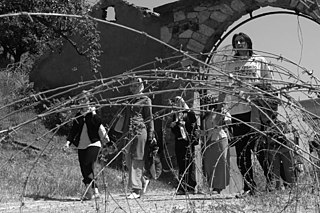 W
W2004 unrest in Kosovo is the worst ethnic violence case in Kosovo since the end of the 1999 conflict erupted in the partitioned town of Mitrovica, leaving hundreds wounded and at least 14 people dead. The unrest was precipitated by misleading reports in the Kosovo Albanian media which falsely claimed that three Kosovo Albanian boys had drowned after being chased into the Ibar River by a group of Kosovo Serbs. UN peacekeepers and NATO troops scrambled to contain a raging gun battle between Serbs and ethnic Albanians. In Serbia the events were also called the March Pogrom, while in Kosovo they are called The March Unrest.
 W
WStorming of the Macedonian Parliament, also known as Bloody Thursday occurred on 27 April 2017, when about 200 Macedonian nationalists stormed the Macedonian Parliament in reaction to the election of Talat Xhaferi, an ethnic Albanian, as speaker of the Assembly of the Republic of Macedonia. The violence was condemned by the European Union and NATO, who also greeted the election of Xhaferi as new parliament speaker.
 W
WIn the wake of the 1947–48 Civil War in Mandatory Palestine, a riot against the Jewish community of Manama, in the British Protectorate of Bahrain, on December 5, 1947. A mob of Iranian and Trucial States sailors ran through the Manama Souq, looted Jewish homes and shops, and destroyed the synagogue. One Jewish woman died; she was either killed or died from fright.
 W
WMaria Hertogh, also known as Nadra binte Ma'arof and Natrah, was a Dutchwoman of Eurasian extraction and Malay upbringing, notable for being at the centre of the Maria Hertogh riots as a girl.
 W
WThe Mława riot, or Mława incident, or Mława pogrom, was a series of violent devastations and looting incidents on 26–27 June 1991 when a group of youth estimated at 200 individuals, including young females, invaded the homes of Roma residents of the Polish town of Mława causing them to flee. Not a single Roma person was injured in the riot, but the material losses were substantial affecting up to 40% of residences. Many perpetrators were arrested on-site; a number of them sentenced to jail after a trial. The violence was described as motivated by racism and jealousy. The incident that triggered the riot was the killing of a Polish pedestrian struck along with his companion in a hit-and-run by a Romani male driver.
 W
WFrom 6 to 11 July 1997 there were mass protests, fierce riots and gun battles in Irish nationalist districts of Northern Ireland. Irish nationalists/republicans, in some cases supported by the Provisional Irish Republican Army (IRA), attacked the police and British Army. The protests and violence were sparked by the decision to allow the Orange Order to march through a Catholic/nationalist neighbourhood of Portadown. Irish nationalists were outraged by the decision and by the RUC's aggressive treatment of those protesting against the march. There had been a bitter dispute over the march for many years.
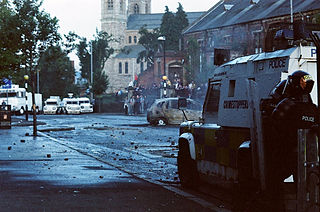 W
WThe 2011 Northern Ireland riots were a series of riots between 20 June 2011 and 16 July 2011, starting originally in Belfast, before spreading to other parts of Northern Ireland. They were initiated by the Ulster Volunteer Force.
 W
WOn 29 December 2008, violent riots first broke out in Oslo, Norway amid protests against the Gaza War, starting outside the Israeli embassy. Riots broke out again following a protest on 4 January 2009, while the most violent and destructive riots took place on 8 and 10 January when riots spread throughout the city with widespread destruction of private and public property, clashes between rioters and police with several injuries, as well as attacks on civilians, including individuals targeted due to being thought by rioters to be Jews. Around 200 people were arrested in total, mainly Muslim youth, supported by left-wing autonomous Blitz activists.
 W
WFrom August 22 to August 24, 1992 violent xenophobic riots took place in the Lichtenhagen district of Rostock, Germany; these were the worst mob attacks against migrants in postwar Germany. Stones and petrol bombs were thrown at an apartment block where asylum seekers lived, but no one was killed. At the height of the riots, several hundred militant right-wing extremists were involved, and about 3,000 neighbourhood onlookers stood by, applauding them.
 W
WIn September 2009, Ürümqi, the capital of the Xinjiang Uyghur Autonomous Region in the People's Republic of China, experienced a period of unrest in the aftermath of the July 2009 Ürümqi riots. Late August and early September saw a series of syringe attacks on civilians. In response to the attacks, thousands of residents held protests for several days, resulting in the deaths of five people. In addition, the arrest and beating of several Hong Kong journalists during the protests attracted international attention.
 W
WThe Shaoguan incident was a civil disturbance which took place overnight on 25/26 June 2009 in Guangdong, China. A violent dispute erupted between migrant Uyghurs and Han Chinese workers at a toy factory in Shaoguan as a result of false allegations of the sexual assault of a Han Chinese female. Groups of Han Chinese set upon Uyghur co-workers, leading to at least two Uyghurs being violently killed by angry Han Chinese men, and some 118 people injured, most of them Uyghurs.
 W
WThe 1915 Sinhalese-Muslim riots was a widespread and prolonged ethnic riot in the island of Ceylon between Sinhalese Buddhists and the Ceylon Moors and the brutal suppression of it by the British colonial authorities.
 W
WFollowing is a List of riots in Sri Lanka. Sri Lanka is an island nation situated in South Asia. It has experienced ethnic tensions between its majority Sinhalese and minority Tamils and Moors populations since 1915 from time to time.
 W
WThe 1977 anti-Tamil pogrom in Sri Lanka followed the 1977 general elections in Sri Lanka where the Sri Lankan Tamil nationalistic Tamil United Liberation Front won a plurality of minority Sri Lankan Tamil votes in which it stood for secession. Around 300 Tamils were killed in the riots.
 W
WThe Murder of Egor Sviridov refers to an FC Spartak Moscow fan's death in a clash between two groups of youth, one of which was composed of recent migrants from Russia's North Caucasus republics. The affair took place on December 6, 2010, at Kronstadt boulevard in the north of Moscow. Sviridov's death provoked a number of high-profile rallies and rioting in the capital as well as in Saint Petersburg, Rostov-on-Don and other cities across Russia.
 W
WThe 2008 Tibetan unrest was a series of protests and demonstrations over the Chinese government's treatment and alleged persecution of Tibetans. The unrest also included ethnic conflicts between Tibetans and Han and Hui Chinese.
 W
WThe 1945 Anti-Jewish riots in Tripolitania was the most violent rioting against Jews in North Africa in modern times. From November 5 to November 7, 1945, more than 140 Jews were killed and many more injured in a pogrom in British-military-controlled Tripolitania. 38 Jews were killed in Tripoli from where the riots spread. 40 were killed in Amrus, 34 in Zanzur, 7 in Tajura, 13 in Zawia and 3 in Qusabat.
 W
WThe 1948 Anti-Jewish riots in Tripolitania were riots between the antisemitic rioters and Jewish communities of Tripoli and its surroundings in June 1948, during the British Military Administration in Libya. The events resulted in 13-14 Jews and 4 Arabs dead and destruction of 280 Jewish homes. The events occurred during the 1948 Arab-Israeli War.
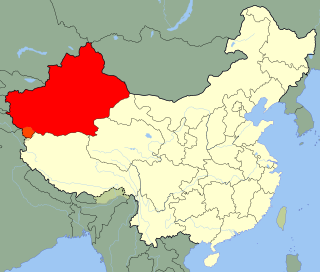 W
WThe 2008 Uyghur unrest is a loose name for incidents of communal violence by Uyghur people in Hotan and Qaraqash county of Western China, with incidents in March, April, and August 2008. The protests were spurred by the death in police custody of Mutallip Hajim.